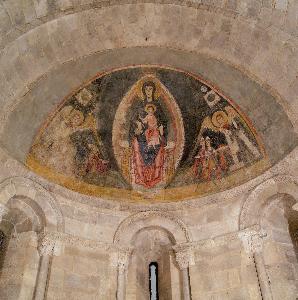Master Of Pedret
Master Of Pedret
Place: Catalonia
Biography:
Early Twelfth Century, Catalonia, Spain
In the realm of art history, there exist a few masters whose works have been shrouded in mystery, yet continue to captivate art enthusiasts and scholars alike. One such enigmatic figure is the Master of Pedret, a Romanesque fresco painter active in Catalonia during the early twelfth century.
The Artistic Legacy
The Master of Pedret's most representative work, the right side of the apse of the church of San Quirze Pedret, now resides at the Museu Nacional d’Art de Catalunya in Barcelona, Spain. This masterpiece is a testament to the artist's skill in capturing the essence of Romanesque art.
Key Works and Influences
- The right side of the apse of San Quirze Pedret, now at the Museu Nacional d’Art de Catalunya, Barcelona, Spain.
- Other notable works include frescoes in various Catalan churches, showcasing the artist's versatility and contribution to Romanesque art.
Artistic Style and Techniques
Characteristics of Master of Pedret's Art:- Employment of vibrant colors and detailed compositions.
- Incorporation of Christian motifs and biblical themes.
- Use of fresco techniques, highlighting the artist's skill in this medium.
Legacy and Impact
The Master of Pedret's influence on Romanesque art is undeniable. This anonymous artist has left an indelible mark on the art world, with works that continue to inspire artists and fascinate scholars. Further Reading:
- Master Of Pedret | Wikioo.org
- Romanesque Art - Wikipedia
- Hastings Museum and Art Gallery | Wikioo.org
Conclusion
The Master of Pedret, though shrouded in mystery, remains a pivotal figure in Romanesque art. This enigmatic artist's works continue to captivate audiences, offering a glimpse into the artistic nuances of early twelfth-century Catalonia.

